At Historically Black Colleges and Universities (HBCUs) across the American South, the majorettes are not just dancers; they are the stars of the show, electrifying football games with their unique and captivating performances. This distinctive dance style, born from the creativity and passion of Black women and femmes, has cultivated a devoted following. Majorette Dance is a high-energy spectacle, seamlessly blending the precision of a kickline with the playful allure of burlesque, all while powerfully embodying the vibrant energy of the marching band’s music.
“The essence of majorette dancing is its sheer explosiveness,” explains J’aime Griffith, a professor at Grambling State University and director of the renowned Orchesis Dance Company. “Dancers must project their energy and movements across the entire stadium, engaging in a spirited visual competition with the opposing band and dance team. The goal is to captivate and outshine.”
Recently, majorette dance has transcended its traditional boundaries, stepping into the mainstream spotlight through reality TV shows, films, and viral trends on social media platforms like TikTok. This increased visibility has brought both exciting new opportunities and complex challenges for the majorette community as it navigates broader recognition.
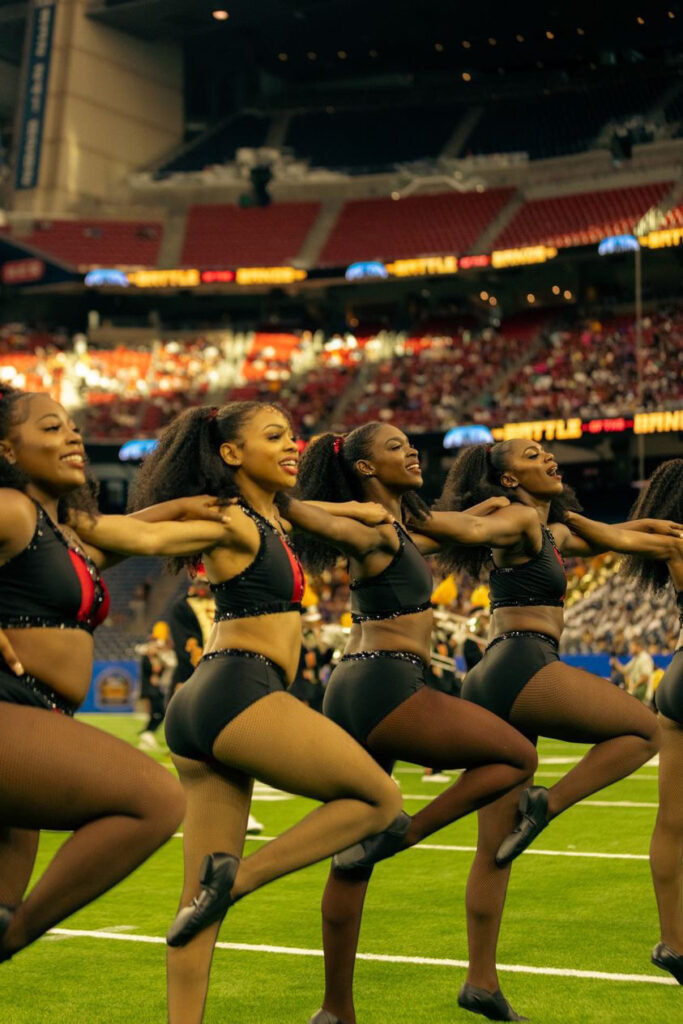 Majorette dancers from Grambling State University's Orchesis Dance Company perform a high-energy halftime routine.
Majorette dancers from Grambling State University's Orchesis Dance Company perform a high-energy halftime routine.
Tracing the Historical Evolution of Majorette Dance
Majorette dance, deeply rooted in HBCU tradition, represents a fascinating fusion of Africanist and European dance influences. This blend of aesthetics remains central to the art form, with contemporary majorette choreography drawing from a rich palette of jazz, hip hop, and ballet techniques. Field routines, the dynamic performances staged on the football field during halftime alongside the marching band, are characterized by a diverse movement vocabulary. These routines might incorporate “bucking,” a powerful pelvic thrust performed in a wide stance, alongside a graceful grand battement, a high balletic kick with pointed toes. Stand routines, performed closer to the audience in the bleachers, maintain a similar energy but at a more intimate scale, often incorporating call-and-response elements to engage spectators directly.
The Alcorn State University Golden Girls hold a distinguished place in majorette dance history as the pioneering example of the style as we recognize it today. Their debut at the 1968 Orange Blossom Classic in Miami marked a turning point. Affectionately hailed as “the mothers” within the majorette community, their iconic gold boots have become a lasting symbol of this dance tradition.
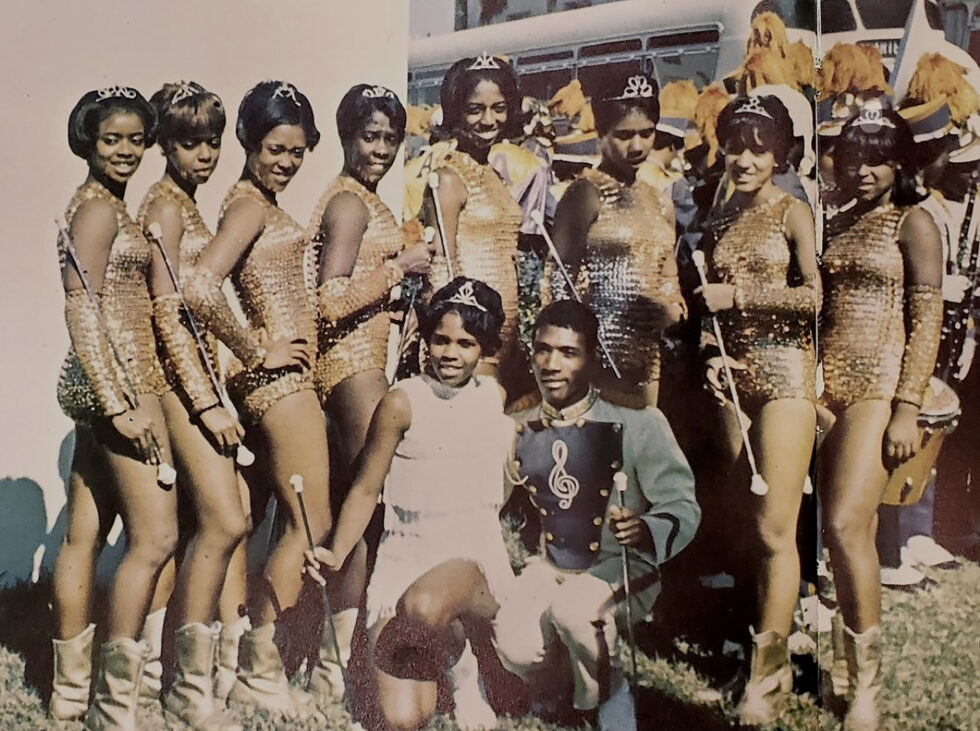 The pioneering Alcorn State University Golden Girls, the first HBCU majorette dance line, circa 1960s.
The pioneering Alcorn State University Golden Girls, the first HBCU majorette dance line, circa 1960s.
The Jackson State University Prancing J-Settes also played a crucial role in shaping majorette dance. Their innovative approach, known as J-setting, developed in collaboration with queer men, is now widely practiced. J-setting uniquely blends the rhythmic intensity of West African dance with acrobatic elements, creating visually stunning and technically demanding performances. (Think of the powerful choreography in Beyoncé’s “Single Ladies [Put a Ring on It]” music video, but amplified with even more elaborate stunts and formations.)
Dr. Thomas DeFrantz, a professor at Northwestern University and a leading scholar in Black studies and dance, emphasizes the social and cultural context of majorette dance’s evolution. “Dance forms often emerge to serve the needs and aspirations of young people,” he explains. “Majorette dance arose to empower young Black women, fostering community, attracting camaraderie and potential partnerships, and serving as a vibrant symbol of their collective identity.”
Majorette Dance Moves Beyond the Field
The increasing visibility of majorette dance outside of HBCU culture presents both exciting opportunities and complex questions about cultural ownership and representation. Television programs like Lifetime’s “Bring It!” have introduced majorette dance to a broader audience, while Beyoncé’s iconic HBCU-inspired performance at Coachella in 2018 catapulted the style onto a global stage. Furthermore, a film produced by Oprah and H.E.R., centered around a Los Angeles ballerina who transitions into majorette dance, is currently in development, promising further mainstream exposure. The style has also permeated digital culture, with majorette-inspired dance challenges becoming a popular trend on TikTok.
This surge in popularity is influencing the evolution of majorette dance itself, according to Griffith. She observes an increasing incorporation of commercial dance styles, such as heels dance, as well as more extreme acrobatic tricks borrowed from competitive dance and social media trends. While many dancers welcome the mainstream recognition as long overdue, concerns about maintaining the integrity and foundational aspects of majorette dance within this broader context are also being voiced.
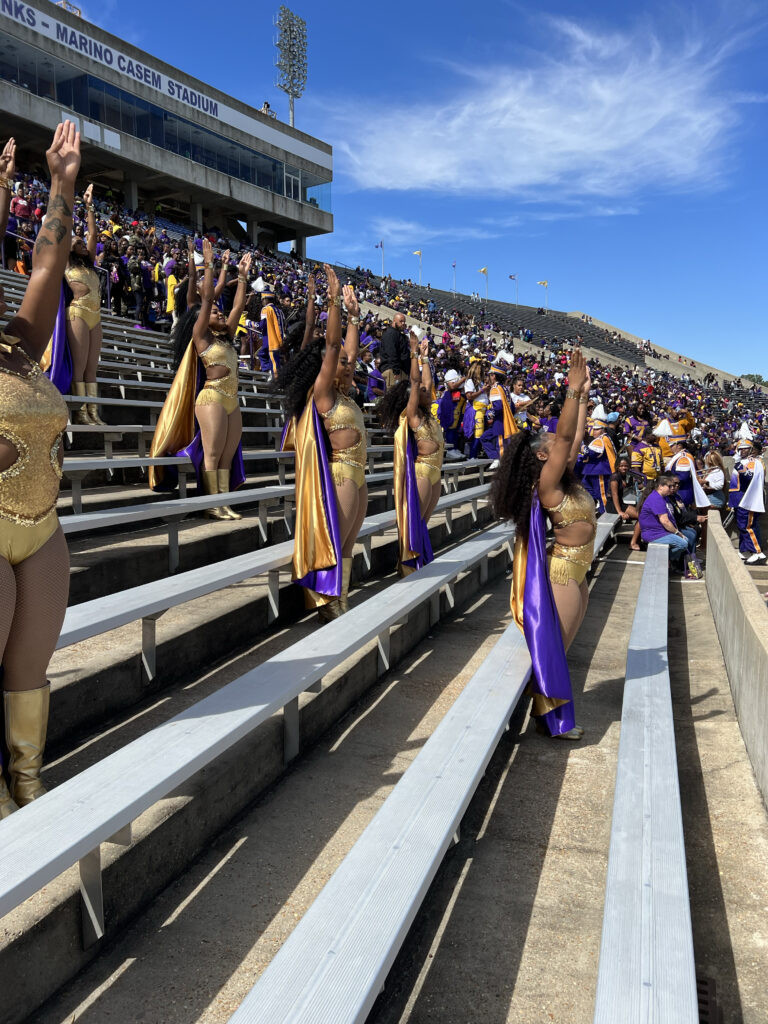 The Alcorn State University Golden Girls showcase a vibrant stand routine, a signature of majorette dance culture.
The Alcorn State University Golden Girls showcase a vibrant stand routine, a signature of majorette dance culture.
“I am thrilled to see majorette dance finally receiving the recognition it deserves,” shares Sanaa Davis-McClain, former captain of the Howard University Ooh La La! Dance Line. “However, it’s equally important to highlight the educational aspects, the training, and the deep-rooted traditions that form the bedrock of this art form.”
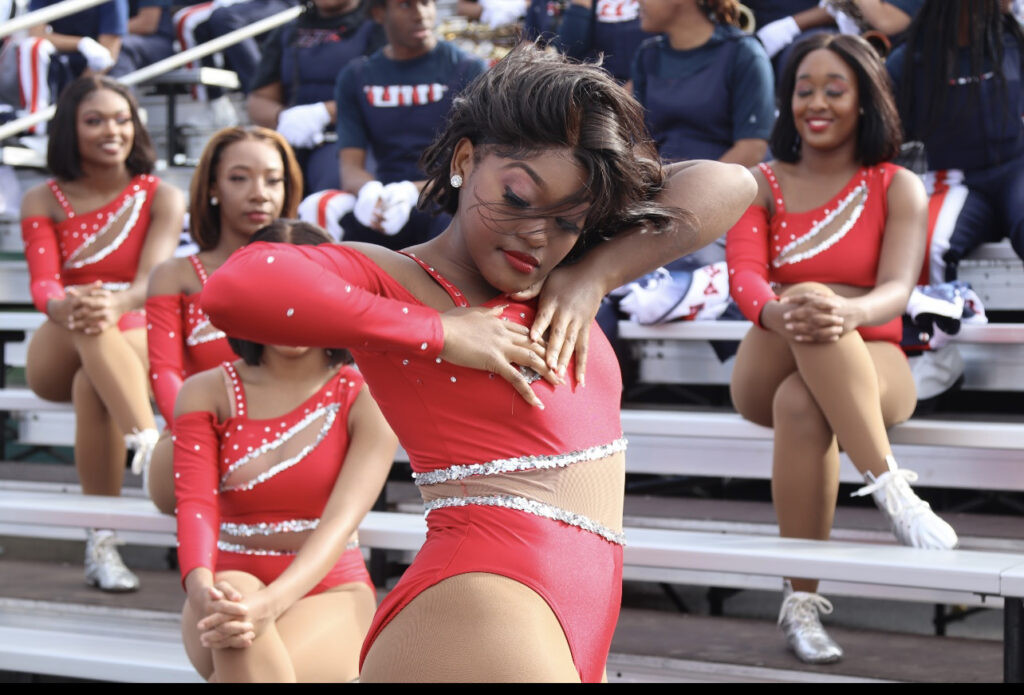 Sanaa Davis-McClain, former captain of the Howard University Ooh La La! Dance Line, a prominent figure in majorette dance.
Sanaa Davis-McClain, former captain of the Howard University Ooh La La! Dance Line, a prominent figure in majorette dance.
Majorette dance’s influence has even extended to non-HBCU campuses. In September 2022, a stand performance by the newly formed Cardinal Divas of the University of Southern California (USC) sparked considerable online discussion. This team faces unique challenges, partly due to ongoing dialogues within HBCU culture about the broader adoption of majorette dance.
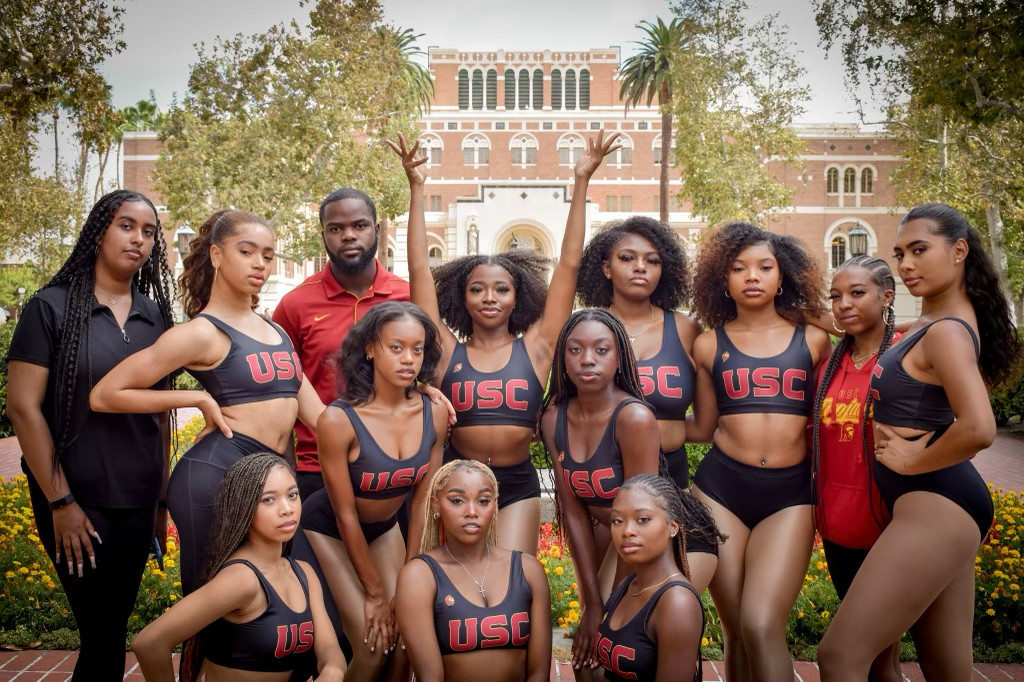 Princess Isis Lang, founder of the University of Southern California Cardinal Divas, bringing majorette dance to a non-HBCU setting.
Princess Isis Lang, founder of the University of Southern California Cardinal Divas, bringing majorette dance to a non-HBCU setting.
“Some people expressed the sentiment that because I don’t attend an HBCU, I shouldn’t have the right to create this team, suggesting a need to gatekeep the culture,” recounts Princess Isis Lang, founder and assistant coach of the Cardinal Divas. This initial resistance towards Lang, a Black woman establishing a team at a predominantly white institution, reflects a historical pattern of cultural appropriation and the erasure of Black creators.
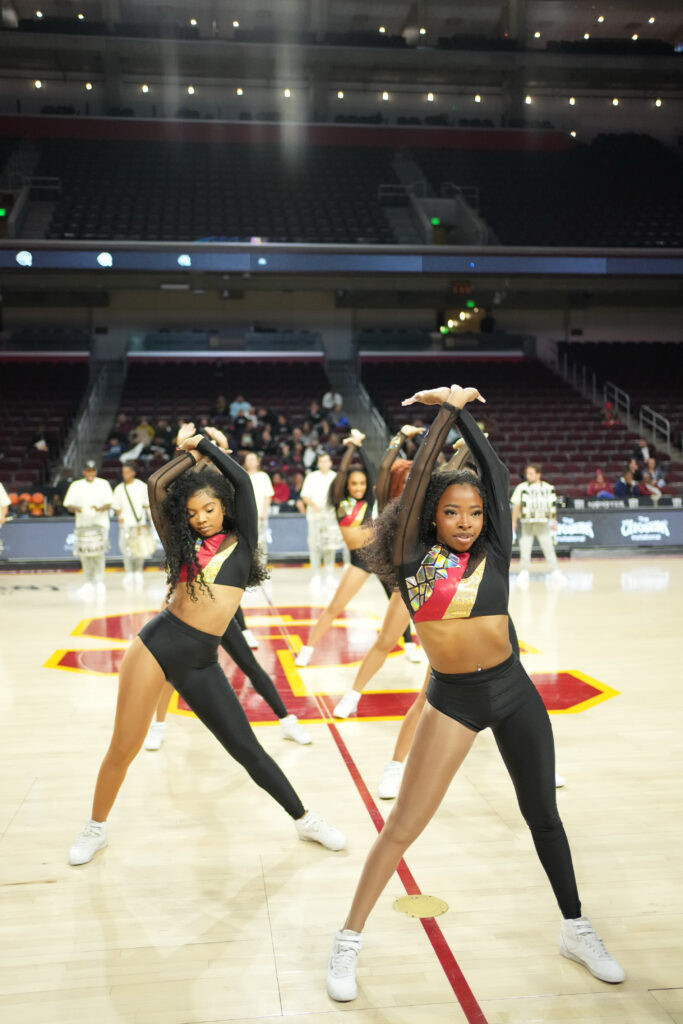 The USC Cardinal Divas demonstrate majorette dance style, expanding its reach beyond historically Black colleges and universities.
The USC Cardinal Divas demonstrate majorette dance style, expanding its reach beyond historically Black colleges and universities.
Giselle Edwards, a Cardinal Divas dancer, offers a different perspective, emphasizing individual identity over institutional affiliation. “My Black identity isn’t defined by where I study,” she asserts. “Whether I’m at an HBCU, USC, or a community college, it doesn’t change who I am.” Many within the HBCU community, including Dr. Kecia Ashley, sponsor of the Golden Girls and an alumna of the squad, support groups like the Cardinal Divas. “I view other cultures embracing our dance style as a form of respect and admiration for the excellence within our culture,” Ashley states. “And that’s something to be celebrated.”
The Enduring Legacy of Majorette Dance
As majorette dance continues to evolve and expand across diverse cultural landscapes, new growing pains and dialogues are inevitable. However, a powerful constant remains at its core: the central role of Black women. They are the unwavering guardians and innovators of this dynamic art form, ensuring the preservation and evolution of its rich legacy.
“Being a majorette dancer has profoundly inspired me to pursue my aspirations,” concludes Davis-McClain, who is now building a professional dance career in Los Angeles. “This experience, in itself, speaks volumes about the transformative impact of this culture on young women like myself.”
